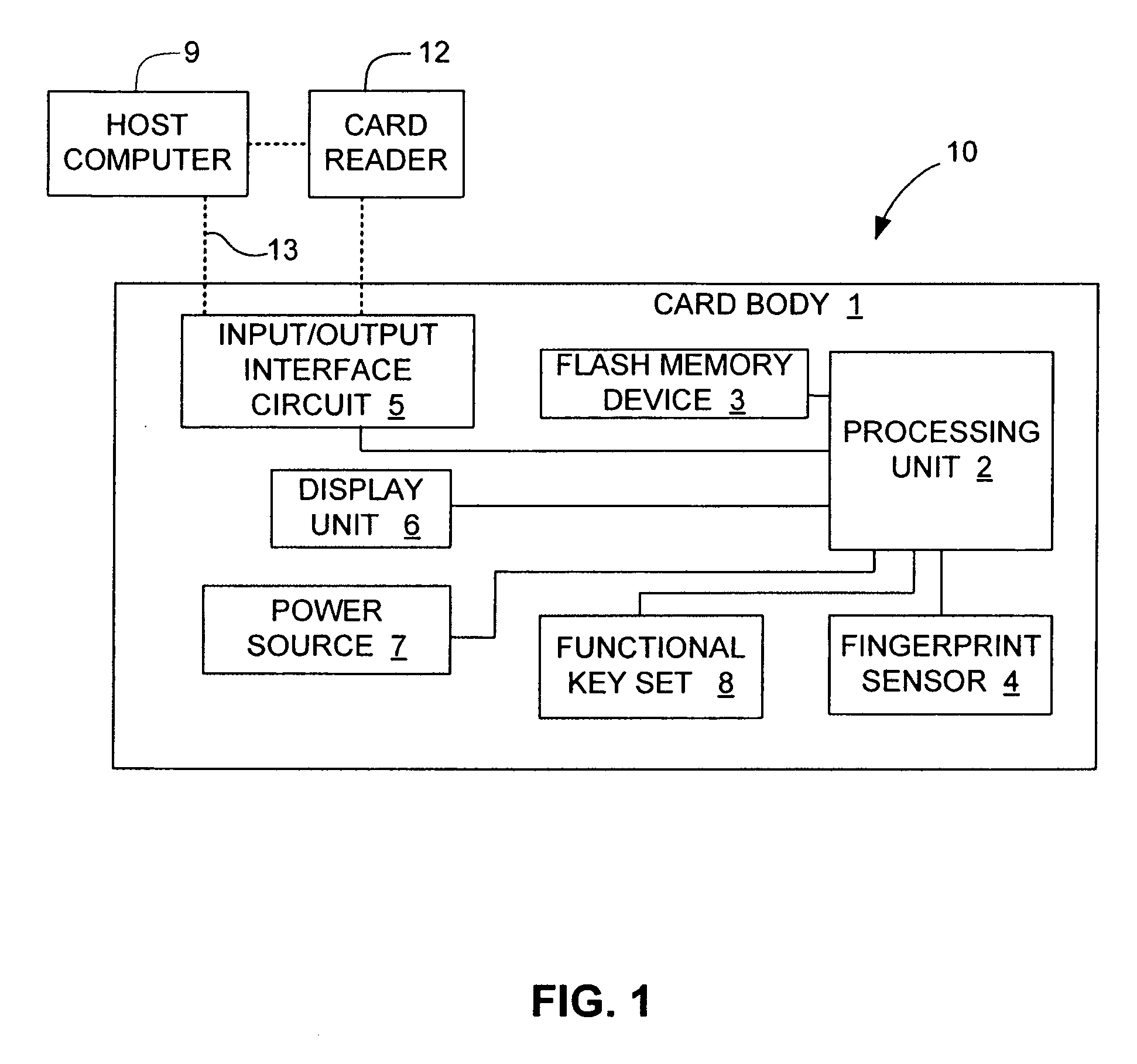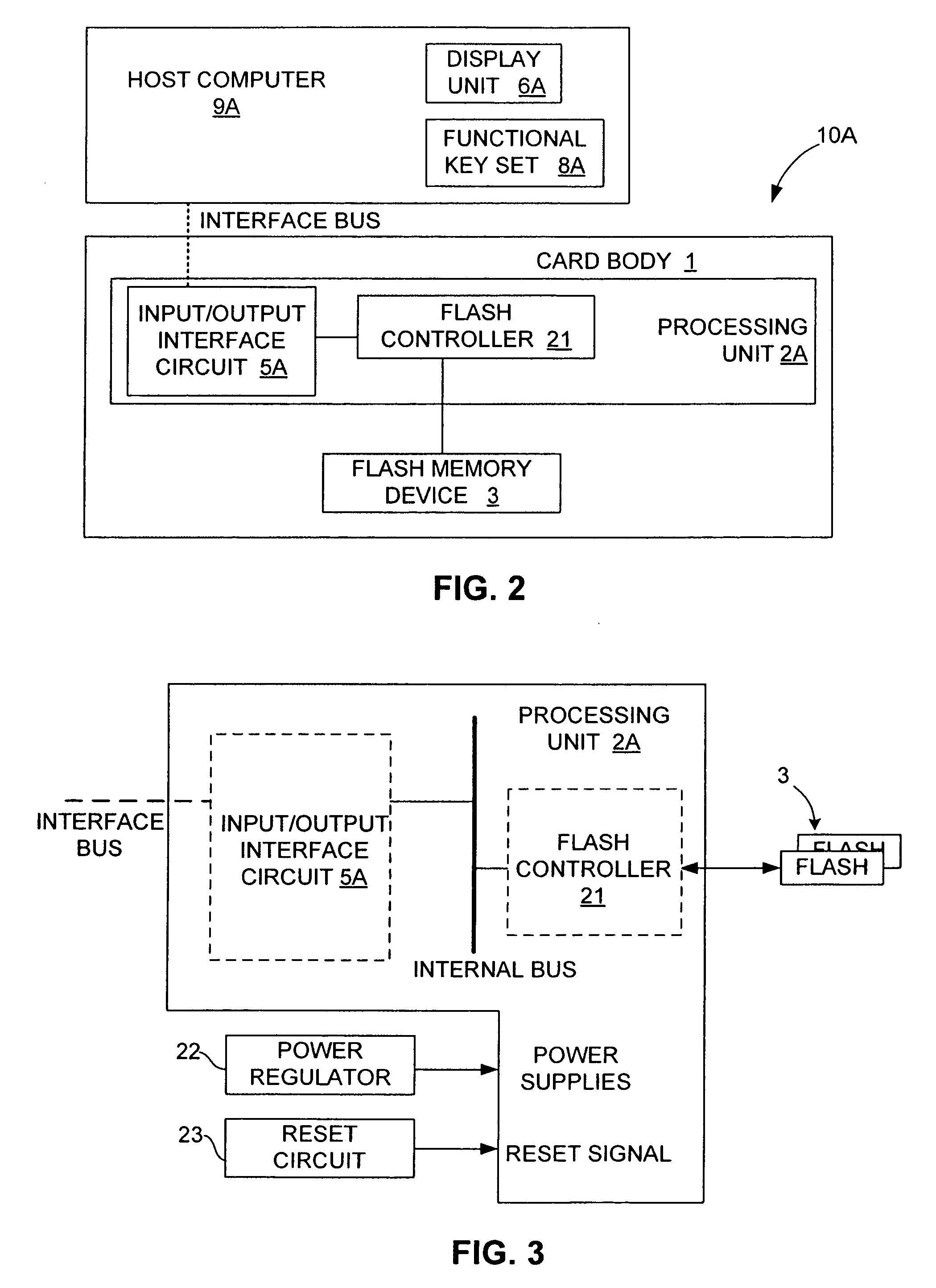Managing bad blocks in various flash memory cells for electronic data flash card
a technology flash memory cells, applied in the field of electronic data flash cards, can solve the problems of limited life span of flash memory cells, inability to access confidential information, inherent limitations of flash memory, etc., and achieve the effect of reducing the search time for available, avoiding external buffer congestion, and significantly increasing the speed of block management operations
- Summary
- Abstract
- Description
- Claims
- Application Information
AI Technical Summary
Benefits of technology
Problems solved by technology
Method used
Image
Examples
Embodiment Construction
[0042] Referring to FIG. 1, according to an embodiment of the present invention, an electronic data flash card 10 is adapted to be accessed by an external (host) computer 9 either via an interface bus 13 or a card reader 12 or other interface mechanism (not shown), and includes a card body 1, a processing unit 2, one or more flash memory devices 3, a fingerprint sensor 4, an input / output interface circuit 5, an optional display unit 6, an optional power source (e.g., battery) 7, and an optional function key set 8.
[0043] Flash memory device 3 is mounted on the card body 1, stores in a known manner therein one or more data files, a reference password, and the reference fingerprint data obtained by scanning a fingerprint of one or more authorized users of the electronic data flash card 10. Only authorized users can access the stored data files. The data file can be a picture file or a text file.
[0044] The fingerprint sensor 4 is mounted on the card body 1, and is adapted to scan a fi...
PUM
 Login to View More
Login to View More Abstract
Description
Claims
Application Information
 Login to View More
Login to View More - R&D
- Intellectual Property
- Life Sciences
- Materials
- Tech Scout
- Unparalleled Data Quality
- Higher Quality Content
- 60% Fewer Hallucinations
Browse by: Latest US Patents, China's latest patents, Technical Efficacy Thesaurus, Application Domain, Technology Topic, Popular Technical Reports.
© 2025 PatSnap. All rights reserved.Legal|Privacy policy|Modern Slavery Act Transparency Statement|Sitemap|About US| Contact US: help@patsnap.com



